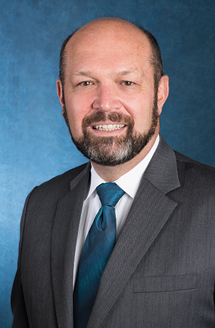
Richard C. Friedberg, MD, PhD
October 2015—As I mulled over the best way to begin my first column, two classes I had taken long ago came to mind. The first was part of an intensive undergraduate philosophy program at Stanford in 1978. The second, on organizational behavior, was part of a master’s program in health care management at Harvard 20 years later. In each case, I expected little more than a series of fuzzy discussions. Instead, the components I thought would be the lightest were the deepest.
From the philosophy program, I learned to identify one core principle and keep it front and center. From the business course, I learned that successful organizations keep their members engaged by fostering honest communication.
To those ends, I would like to suggest three premises for our discussions over the next two years:
- The health care ecosystem will be in flux for some time yet (the “new normal”).
- Evolution in itself is neither good nor bad, but inevitable. It can sometimes be influenced but can never be dictated.
- Patient-centered thinking is the anchor for any conversation about health care reform.
The last premise is one we can comfortably embrace. It is also the only one we can control, which makes it an excellent candidate for our core principle. In fact, we could probably identify many indisputable premises and still not find one more widely accepted across medicine.
I believe we are in the early moments of a golden era of diagnostics when treatment will be dictated by diagnostic outcome, continually updated and refined. New molecular techniques, imaging modalities, and methods of specimen acquisition will continue to be added to our toolbox.
Medicine will continue to become more technical and molecular, more quantitative and less qualitative, more digital and less analog, more integrated and less discrete. Pathologists can anticipate deeper engagement in validation, reproducibility, precision, and quality measures. When we consult with colleagues, we will spend more time providing both a clinical interpretation and guidance for next steps. As we have done since the days of Virchow, we will need to explain and translate what our tools tell us. The net effect will be greater opportunities and greater reliance on pathology. All of this is good.
In Massachusetts, eight years of experience with mandated coordinated care has brought me to conclude that health care reform will come to mean the end of primary care as we know it. There are simply not enough primary care physicians in the pipeline to care for all the newly insured patients. At Baystate Health, where I chair the
Department of Pathology, and Baystate Reference Laboratories, where I serve as medical director, we work with a growing number of nurse practitioners and physician assistants who are deeply involved in patient care. Because more people (including patients) with less training are accessing our reports, we are talking about restricting the technical jargon where we can so that the actionable content is clearer to nonphysicians.
We are also talking about focusing on utilization review with an eye to simplified test ordering. Perhaps we can create test panels identified by diagnosis rather than individual technical or chemical names. These steps might be labor-intensive in the short run, and they may require policy and process modifications. But they could improve the quality of test ordering and boost overall efficiency.
Patient-centered thinking is a true-north term across all of medicine. In our environment, we look for creative ways to bring it up. When we draw the conversation back to what is best for our patients—as individuals or as populations—we underscore what we have in common with others on the health care team. And everyone is always more satisfied with collaborative solutions that are thoughtfully achieved.
I’d like to see us maintain a frank and focused two-year conversation about patient-centered thinking in pathology with as many colleagues and in as many contexts as possible. The supporting arguments are likely to reveal a great deal about those who take part in the dialogue—who we are and how we think. That’s a fine way to introduce ourselves.
Speaking of which, let me introduce myself. In addition to my role at Baystate, I am a professor and deputy chair, Department of Anatomic and Clinical Pathology, Tufts University School of Medicine. I attended medical school at Duke University, where I also earned a PhD in coagulation biochemistry. My father was a cardiologist; the day after my parents were married in London, they boarded a boat and made their way to Southern Rhodesia (now Zimbabwe), where he was a physician in a company mining town. That’s where I was born. My mother wrote one of her three historical novels about that experience; we may soon have a BBC miniseries based on one of the other novels. We came to the U.S. when I was four, and I grew up near Milwaukee, Wis.
My wife, Di, and I have been happily married for more than 25 years. Di is a speech pathologist who grew up in South Africa and came to the U.S. for graduate study. Although our families had known each other for three generations, Di and I had spent only eight days together when we decided to get engaged. We have three young adult children who are the light of my life and don’t call home enough. There’s more. We’ll talk.
[hr]
Dr. Friedberg welcomes communication from CAP members. Write to him at president@cap.org.